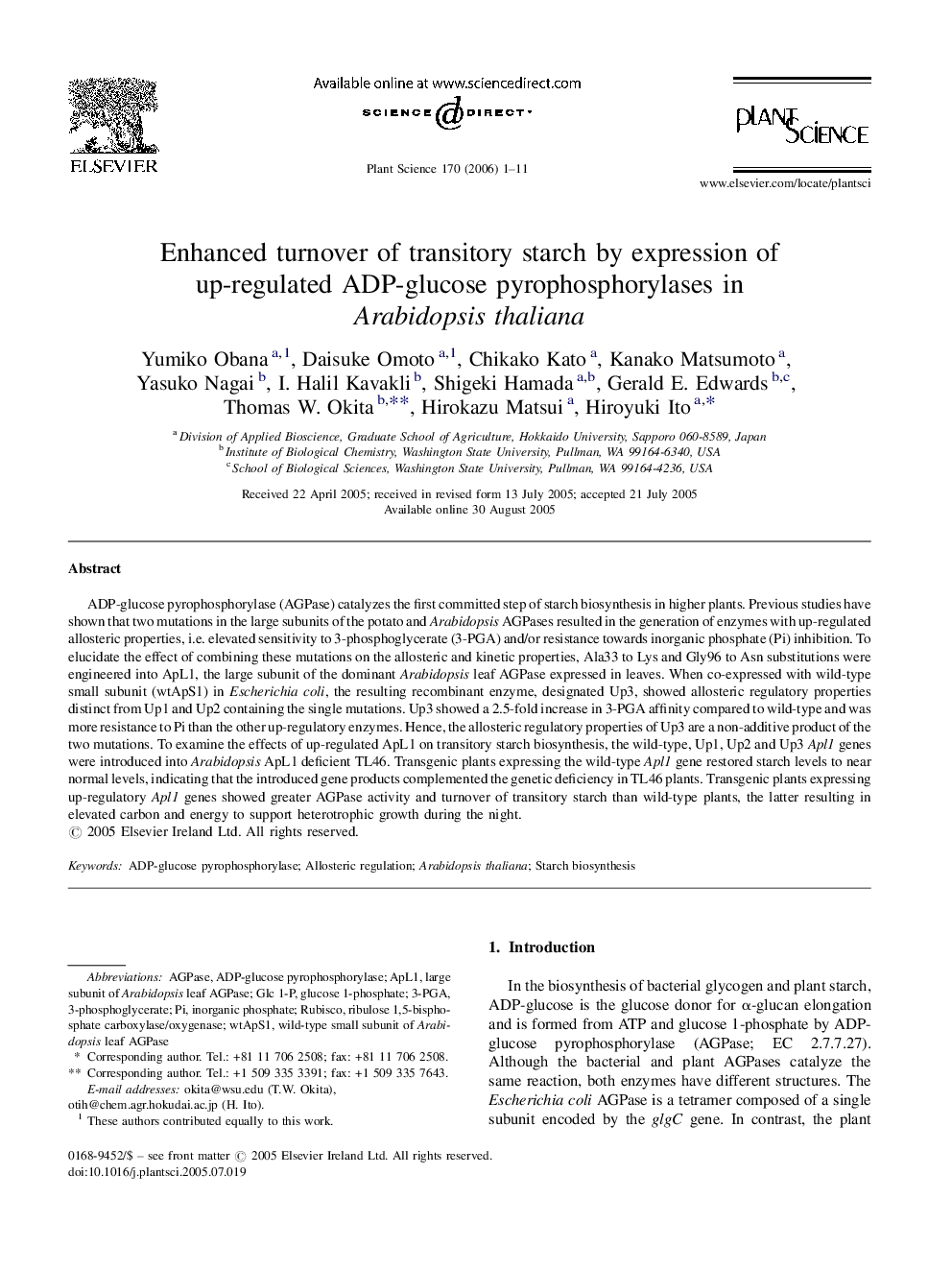| Article ID | Journal | Published Year | Pages | File Type |
|---|---|---|---|---|
| 2018792 | Plant Science | 2006 | 11 Pages |
ADP-glucose pyrophosphorylase (AGPase) catalyzes the first committed step of starch biosynthesis in higher plants. Previous studies have shown that two mutations in the large subunits of the potato and Arabidopsis AGPases resulted in the generation of enzymes with up-regulated allosteric properties, i.e. elevated sensitivity to 3-phosphoglycerate (3-PGA) and/or resistance towards inorganic phosphate (Pi) inhibition. To elucidate the effect of combining these mutations on the allosteric and kinetic properties, Ala33 to Lys and Gly96 to Asn substitutions were engineered into ApL1, the large subunit of the dominant Arabidopsis leaf AGPase expressed in leaves. When co-expressed with wild-type small subunit (wtApS1) in Escherichia coli, the resulting recombinant enzyme, designated Up3, showed allosteric regulatory properties distinct from Up1 and Up2 containing the single mutations. Up3 showed a 2.5-fold increase in 3-PGA affinity compared to wild-type and was more resistance to Pi than the other up-regulatory enzymes. Hence, the allosteric regulatory properties of Up3 are a non-additive product of the two mutations. To examine the effects of up-regulated ApL1 on transitory starch biosynthesis, the wild-type, Up1, Up2 and Up3 Apl1 genes were introduced into Arabidopsis ApL1 deficient TL46. Transgenic plants expressing the wild-type Apl1 gene restored starch levels to near normal levels, indicating that the introduced gene products complemented the genetic deficiency in TL46 plants. Transgenic plants expressing up-regulatory Apl1 genes showed greater AGPase activity and turnover of transitory starch than wild-type plants, the latter resulting in elevated carbon and energy to support heterotrophic growth during the night.
